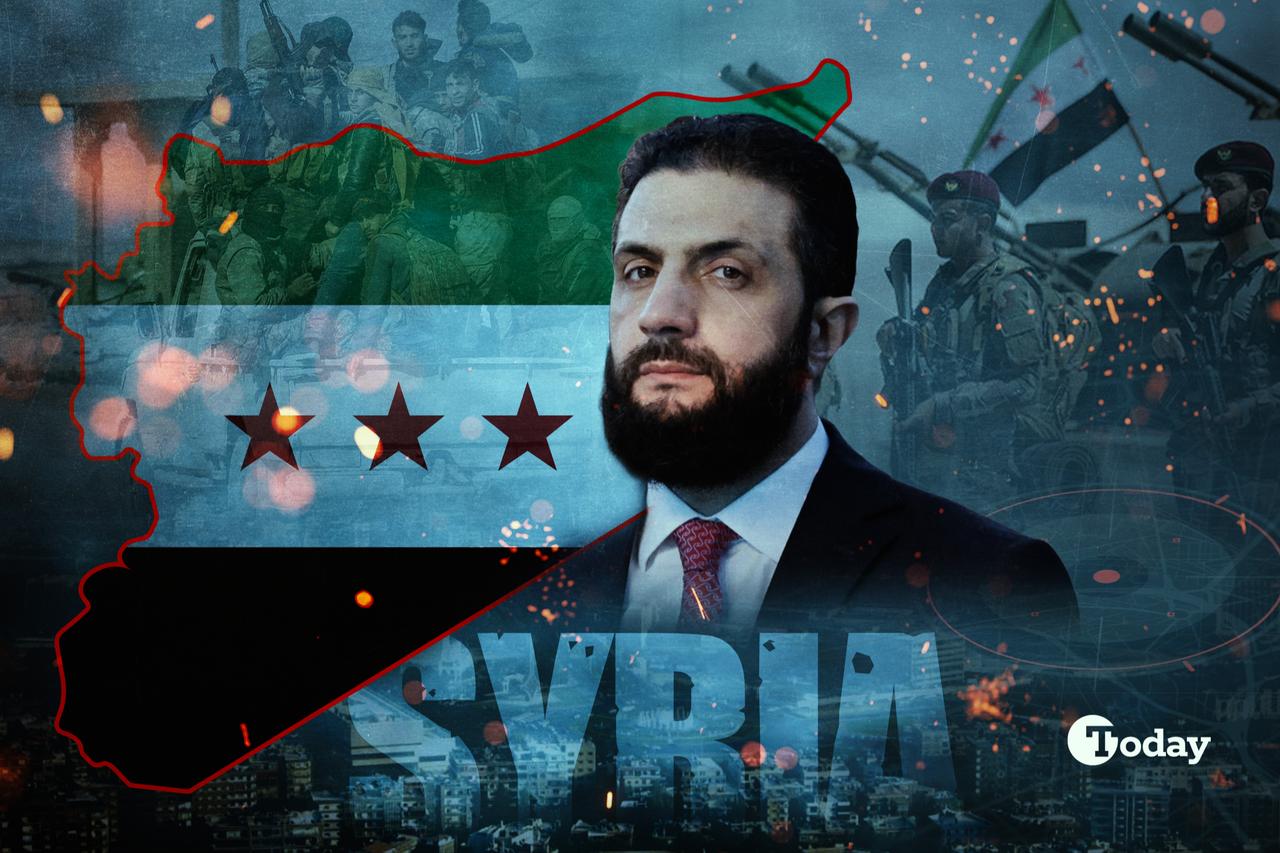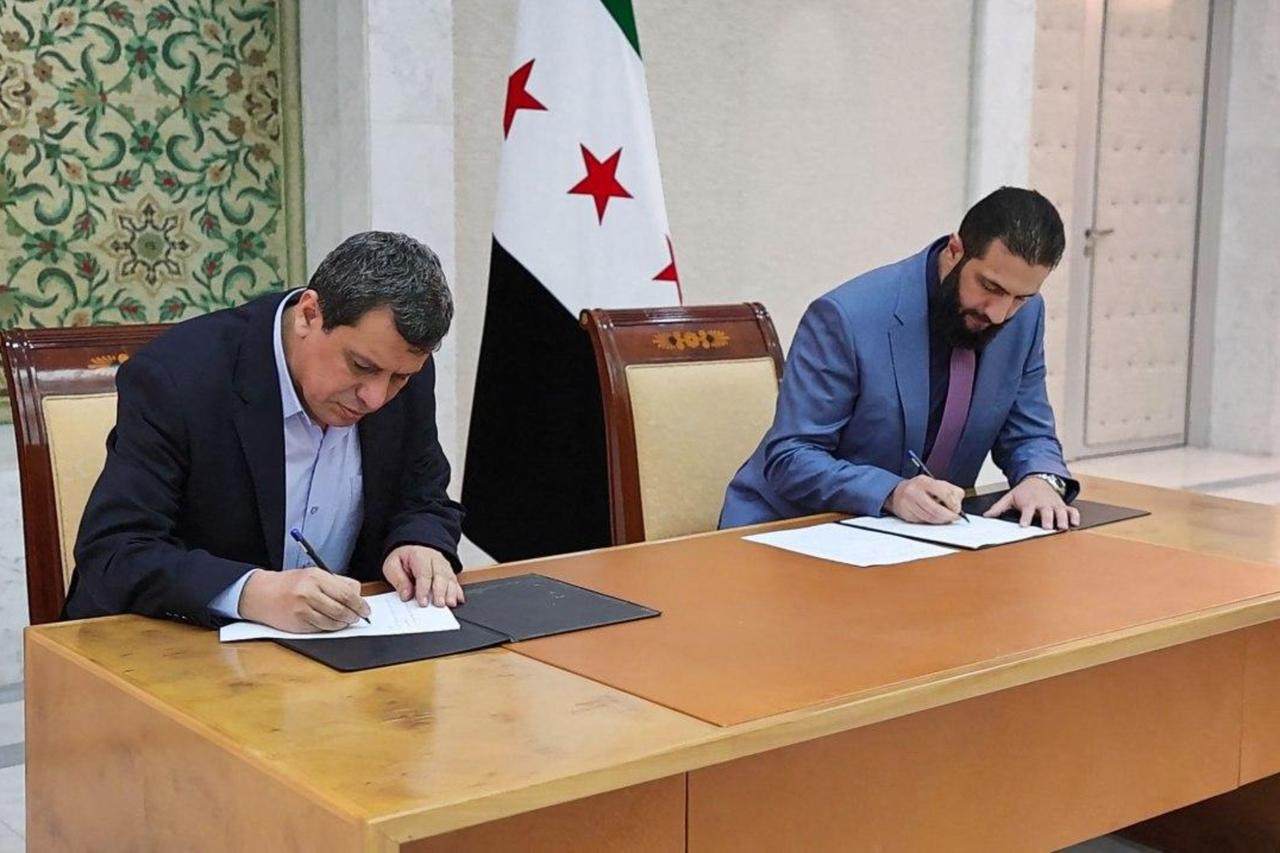

Clashes have renewed between the Syrian Armed Forces and resurgent factions in the Sweida province of southern Syria. SDF, an armed group led by the PKK-linked YPG terrorist group, announced that they foiled an attack by Damascus-affiliated factions in Raqqa in the east of the country, affirming their readiness to respond. This comes after several attacks in Homs and Damascus, raising questions about the greater challenges facing Syria after the fall of the Assad regime under the administration of President Ahmed al-Sharaa, particularly regarding domestic reform and reintegration of various armed groups. Clashes along the coast in March and the failed military campaign last July in Sweida exposed this greater challenge.
The security sector reform in Syria faces the reality that the state's monopoly on violence is replaced by fragmented, often unprofessional insurgents operating without a coherent, organized central body. The security apparatus exhibits inconsistent standards and unpredictable behavior, with some police forces adopting strict approaches while others remain laissez-faire, reflecting localized command structures rather than a consistent national policy. This fragmentation enables a culture of impunity, where forces make independent decisions and lack accountability mechanisms.
Integration of disparate armed factions under the Ministry of Defense has been largely superficial. While factional logos have been removed and groups nominally brought under state authority, the same fighters largely remain in their regions with unchanged loyalties. These forces are not unified, prone to inter-fighting and rivalry, and maintain allegiance to sub-group interests rather than national institutions. This persistence of parallel power structures means the security sector remains a collection of militias wearing state uniforms rather than a coherent national force.
Economic drivers threaten to convert this fragmentation into organized crime. Many factions have historically relied on illicit revenue streams—checkpoint extortion, fuel smuggling, narcotics trafficking—that the national transitional process is now disrupting. Simultaneously, the broader economic crisis pushes unemployed ex-combatants toward kidnapping and robbery, directly linking financial desperation to security deterioration. The risk that militancy will transform into a criminal enterprise grows as legitimate economic opportunities remain absent.
An ideological skew within the security sector further complicates reform. Police and army training institutions incorporate religious content, with official materials featuring faith-based symbols, creating a force identity that alienates non-conservative and non-Sunni communities. This orientation risks establishing a sectarian security apparatus rather than a neutral, nationally representative institution, exacerbating political fragmentation and undermining the legitimacy of state authority among diverse communities. The persistence of these multiple fractures—command, economic, and ideological—creates a security sector that actively undermines rather than supports the rule of law and political integration.

The stalled integration of the SDF exemplifies the broader security sector challenges while introducing unique geopolitical complexities. The March 10 preliminary agreement, under which the SDF pledged to join the Syrian military, has produced no positive or practical steps, leaving the process frozen. The core impasse centers on disarmament: Damascus demands that the SDF dissolve its autonomous region and integrate its members individually into the national army, while the SDF insists on preserving its unit structure and fears that disarmament would leave its fighters vulnerable to attacks by religion-oriented armed groups aligned with the government. They have instead proposed appointing three liaison commanders within the Ministry of Defense and contributing select units to the Syrian Special Forces, while otherwise retaining their internal command hierarchy and territorial control. This model would effectively preserve the SDF’s parallel security structure and advance its objective of maintaining a contiguous Kurdish-led autonomous zone in northeastern Syria.
More broadly, this reflects a wider pattern among non-state armed actors seeking to transition toward quasi-statehood—using territorial control, administrative expansion, and the co-optation of existing state institutions to gain legitimacy and institutional permanence. Trilateral Türkiye-Syria-U.S. discussions aim to implement the March 10 agreement, yet the fundamental divergence between individual and unit integration remains unresolved.
The SDF leadership has signaled conditional willingness to join a new Syrian army provided integration respects their identity and community rights, but Damascus’ next steps remain ambiguous. This standoff occurs under external pressure from multiple vectors: Türkiye, which considers the SDF’s PKK-affiliated backbone a red line and has threatened military operation, either with Damascus or alone, if the group maintains its armed structure beyond the December 2025 deadline; and the United States, which has drawn down its own military presence while pressuring the SDF to accept integration, prioritizing its relationship with Damascus over its Kurdish alliance.

Washington’s calculation reflects a strategic pivot toward the transitional government as a counterterrorism partner and regional asset, diminishing the SDF's leverage as the primary U.S. ground partner against DAESH. This pressure has paradoxically cornered the SDF leadership, making it less amenable to compromise as its security guarantees erode.
The Trump administration has articulated a preference for SDF’s integration into Syrian military leadership structures while retaining a local security role, a formulation that attempts to balance Turkish, Syrian, and Kurdish interests but leaves critical command-and-control questions unresolved. This impasse encapsulates the broader Syrian challenge: security sector reform cannot proceed without genuine political integration, yet political integration requires prior security guarantees that the current system cannot provide.
In sum, while President Sharaa's interim administration has prioritized diplomatic ceremonies and sanctions relief over domestic institutional reform, peripheral territories, particularly in the south and north, devolve into turf wars between the insufficiently controlled armed forces, militias, and quasi-armies like the SDF.
Authors: Dr. Suha Cubukcuoglu is the director of Türkiye Program and a member of the advisory council at TRENDS Research & Advisory in Abu Dhabi, UAE.
Dr. Ayman Eldessouki is a senior researcher at TRENDS Research & Advisory in Abu Dhabi, UAE.